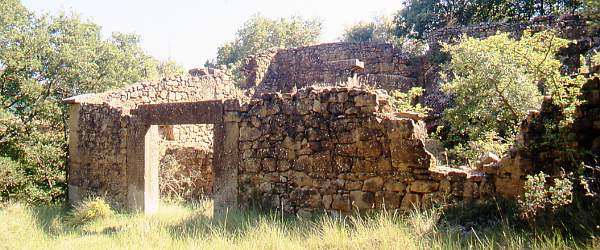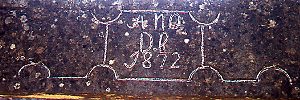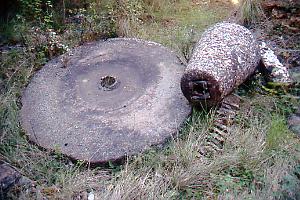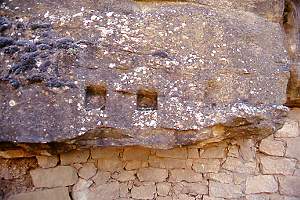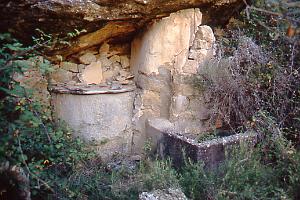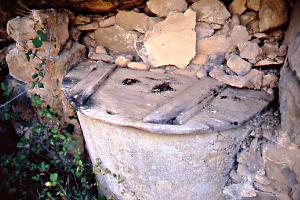Path: Introduction -
Visit the mills; catalogue - Loscertales

Mills in Alto Aragón - aceitero
Loscertales

Loscertales is a village near the city of Huesca — find it in
north-eastern direction. From Huesca take the road towards Barbastro and Siétamo. You'll pass Quicena.
Turn left to Loporzano and Bandalies. Keep following Bandalies, then Sipán and you'll reach
Loscertales eventually. The mill is hidden between the trees and very near the road at km 9 in
the penultimate curve before the village. You can also walk down from the village square.
Pictures: 24.V.2011

